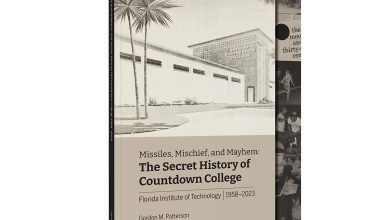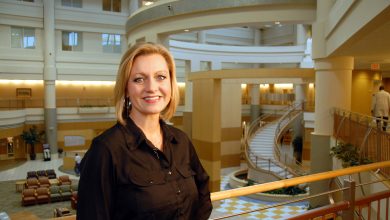The Occasional Writer: Creative Writing as Artifice
By Dr. John Lavelle, Professor of Humanities
A few weeks have gone by since I last posted. The last one discussed forms in creative writing. In academic, scholarly, and professional writing the purpose of the words, sentences and paragraphs is to transmit information in a communicative act. The communicator attempts to organize information so the act will lose the least information as it moves to the communicatee. Words etc become the vehicle in which to carry information. In creative writing, words become their own reason to exist besides communicating information. Joe went to the store communicates the information that at sometime Joe left the place he was and traveled to the store. Joe sauntered slowly to the corner Circle K, however, communicates slightly different information. It also brings attention to the soft “s” sound and thus the reader “hears” the words themselves or to say the words call attention to themselves as does the hard sound of “corner” and “K.”
But that is for another time (as is the fact I started this paragraph with “but” a no-no in academic writing). Before talking about the local (words at the word level) there needs to be a discussion of what creative writing entails globally (the overall function of creatively writing). Today let’s discuss creative writing as artifice.
An artifice is a clever devise used to manipulate what one perceives. Try this on your friends. Have them look at a painting, a portrait/landscape/picture, trying to avoid anything like abstract etc. Ask them to write down what they see. Do it yourself and then come back to this blog BUT DON’T READ AHEAD. Have them read what they saw. What did you/have they written? Usually you will either describe the picture/landscape/portrait or go to another level and assign a meaning to the artwork. If it was an oil painting this is what you saw. You saw colored pigment suspended in oil, or whatever base, applied to a flat canvass to give the illusion of three dimensions.
This is exactly what creative writing is about. To learn to read we have learned to hypnotize ourselves. They started us on one word “apple” and a large picture of the fruit above it. As we learned to imagine the pictures when we read the words, they made smaller pictures, soon only every third page or so and then none at all, but by this time we’d learned to supply all the pictures ourselves.
Thus a creative writer’s job is to create this three-dimensional world not only on the flat surface of a page, but from print—to help the reader imagine a world and the people that occupy it. Freud, who wasn’t one who liked the world of fiction and had some rather harsh things to say about writers and those who read fiction, understood that the trick to a fictional world is to create a believable reality with certain assumed rules. Take The Lord of the Rings. The world is populated with hobbits, elves, orks, dwarfs, and other sundry creatures, all make believe, all which act within prescribed rules. Hobbits don’t fly and no one has a machine gun or a bomber. One of Tolkien’s criticisms of his friend T.S. Lewis was his crossing of this boundary in the Narnia tales specifically his use of Santa Claus in the Lion, the Witch and the Wardrobe.
There needs to be more, though, than just a believable reality. There needs to be a story, a plot, (see the last blog) characterization, something at stake, a protagonist and an antagonist. All these things must be created by the writer.
Going back to the painting metaphor let’s think of a story as a complete picture, but as we all learn as a child, you can color people with a “flesh”-colored crayon and they still won’t look much like people. Any good artist understands that light and shadow not only change colors, but create depth. That is to paint a picture the painter needs to know how and where light changes things and by creating “artificial (artifice) light a painter creates a realistic painting that seems like three dimensions. A painter uses the tools he has at hand to accomplish this, colors, brushes, and importantly technique. Writing can be broken up into tools and technique. Think of words like the colored pigment, sentences like brush strokes, and paragraphs as sections of a painting. The writer has five tools which can be manipulated through techniques to create many effects. They are; exposition, the background to a scene or the way a writer gets from one place (scene) to another; description, used to fill in a scene or character; action, used to move a scene and to also define character; dialogue again to define character (notice dialogue is not used to give information to the reader—a beginner mistake); and interior dialogue, sometimes called interiority or thought, again only used to help develop a character. There need to be further discussion on each one of these in the future. For this blog, it is enough to understand that what “happens” in a story is not necessarily what happens in real life, but is orchestrated by the writer through the manipulation of the words, sentences. and paragraphs.
Attend the Creative Writing Institute of Florida Tech to learn about the creative writing process!





